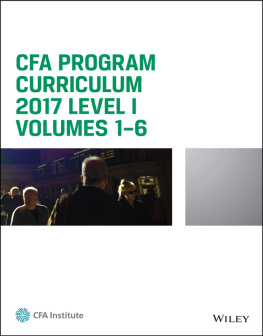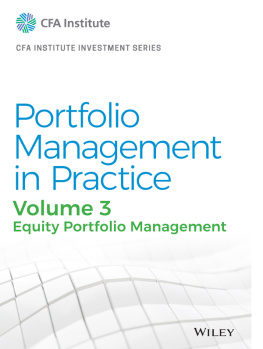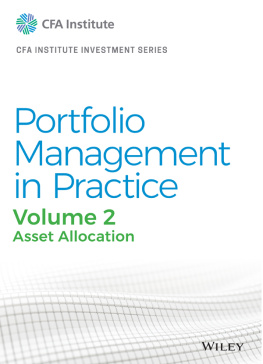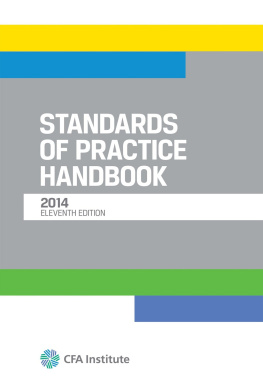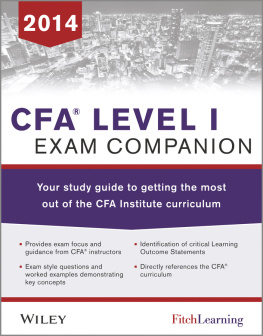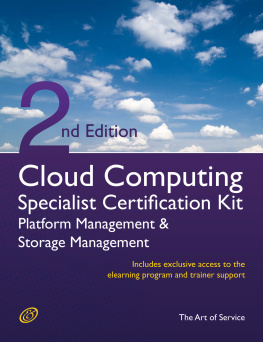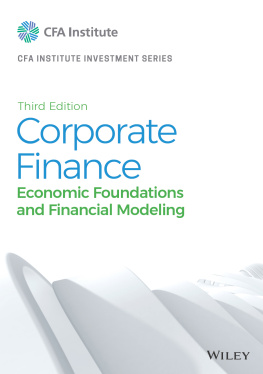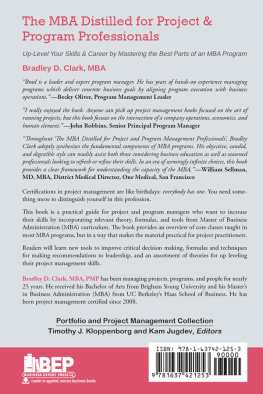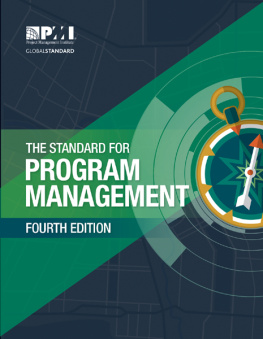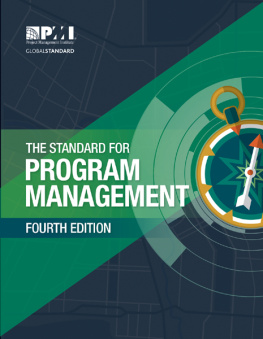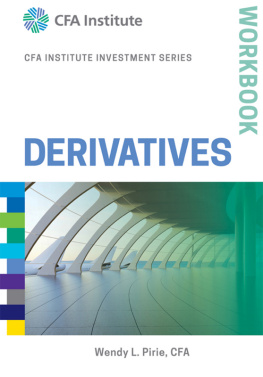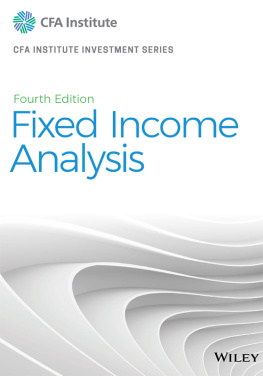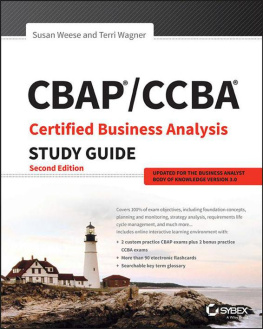
ETHICAL AND PROFESSIONAL STANDARDS AND QUANTITATIVE METHODS
CFA Program Curriculum
2017 LEVEL I VOLUME 1
Photography courtesy of Hector Emanuel.
2016, 2015, 2014, 2013, 2012, 2011, 2010, 2009, 2008, 2007, 2006 by CFA Institute.
All rights reserved.
This copyright covers material written expressly for this volume by the editor/s as well as the compilation itself. It does not cover the individual selections herein that first appeared elsewhere. Permission to reprint these has been obtained by CFA Institute for this edition only. Further reproductions by any means, electronic or mechanical, including photocopying and recording, or by any information storage or retrieval systems, must be arranged with the individual copyright holders noted.
CFA, Chartered Financial Analyst, AIMR-PPS, and GIPS are just a few of the trademarks owned by CFA Institute. To view a list of CFA Institute trademarks and the Guide for Use of CFA Institute Marks, please visit our website at www.cfainstitute.org.
This publication is designed to provide accurate and authoritative information in regard to the subject matter covered. It is sold with the understanding that the publisher is not engaged in rendering legal, accounting, or other professional service. If legal advice or other expert assistance is required, the services of a competent professional should be sought.
All trademarks, service marks, registered trademarks, and registered service marks are the property of their respective owners and are used herein for identification purposes only.
ISBN 978-1-942471-67-7 (paper)
ISBN 978-1-942471-88-2 (ebk)
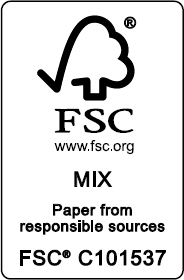
Please visit our website at
www.WileyGlobalFinance.com.

How to Use the CFA Program Curriculum
Congratulations on your decision to enter the Chartered Financial Analyst (CFA) Program. This exciting and rewarding program of study reflects your desire to become a serious investment professional. You are embarking on a program noted for its high ethical standards and the breadth of knowledge, skills, and abilities it develops. Your commitment to the CFA Program should be educationally and professionally rewarding.
The credential you seek is respected around the world as a mark of accomplishment and dedication. Each level of the program represents a distinct achievement in professional development. Successful completion of the program is rewarded with membership in a prestigious global community of investment professionals. CFA charterholders are dedicated to life-long learning and maintaining currency with the ever-changing dynamics of a challenging profession. The CFA Program represents the first step toward a career-long commitment to professional education.
The CFA examination measures your mastery of the core skills required to succeed as an investment professional. These core skills are the basis for the Candidate Body of Knowledge (CBOK). The CBOK consists of four components:
- A broad outline that lists the major topic areas covered in the CFA Program (www.cfainstitute.org/cbok);
- Topic area weights that indicate the relative exam weightings of the top-level topic areas (www.cfainstitute.org/level_I);
- Learning outcome statements (LOS) that advise candidates about the specific knowledge, skills, and abilities they should acquire from readings covering a topic area (LOS are provided in candidate study sessions and at the beginning of each reading); and
- The CFA Program curriculum, which contains the readings and end-of-reading questions, that candidates receive upon exam registration.
Therefore, the key to your success on the CFA examinations is studying and understanding the CBOK. The following sections provide background on the CBOK, the organization of the curriculum, and tips for developing an effective study program.
CURRICULUM DEVELOPMENT PROCESS
The CFA Program is grounded in the practice of the investment profession. Beginning with the Global Body of Investment Knowledge (GBIK), CFA Institute performs a continuous practice analysis with investment professionals around the world to determine the knowledge, skills, and abilities (competencies) that are relevant to the profession. Regional expert panels and targeted surveys are conducted annually to verify and reinforce the continuous feedback from the GBIK collaborative website. The practice analysis process ultimately defines the CBOK. The CBOK reflects the competencies that are generally accepted and applied by investment professionals. These competencies are used in practice in a generalist context and are expected to be demonstrated by a recently qualified CFA charterholder.
The Education Advisory Committee, consisting of practicing charterholders, in conjunction with CFA Institute staff, designs the CFA Program curriculum in order to deliver the CBOK to candidates. The examinations, also written by charterholders, are designed to allow you to demonstrate your mastery of the CBOK as set forth in the CFA Program curriculum. As you structure your personal study program, you should emphasize mastery of the CBOK and the practical application of that knowledge. For more information on the practice analysis, CBOK, and development of the CFA Program curriculum, please visit www.cfainstitute.org.
ORGANIZATION OF THE CURRICULUM
The Level I CFA Program curriculum is organized into 10 topic areas. Each topic area begins with a brief statement of the material and the depth of knowledge expected.
Each topic area is then divided into one or more study sessions. These study sessions18 sessions in the Level I curriculumshould form the basic structure of your reading and preparation.
Each study session includes a statement of its structure and objective and is further divided into specific reading assignments. An outline illustrating the organization of these 18 study sessions can be found at the front of each volume of the curriculum.
The readings and end-of-reading questions are the basis for all examination questions and are selected or developed specifically to teach the knowledge, skills, and abilities reflected in the CBOK. These readings are drawn from content commissioned by CFA Institute, textbook chapters, professional journal articles, research analyst reports, and cases. All readings include problems and solutions to help you understand and master the topic areas.
Reading-specific Learning Outcome Statements (LOS) are listed at the beginning of each reading. These LOS indicate what you should be able to accomplish after studying the reading. The LOS, the reading, and the end-of-reading questions are dependent on each other, with the reading and questions providing context for understanding the scope of the LOS.
You should use the LOS to guide and focus your study because each examination question is based on the assigned readings and one or more LOS. The readings provide context for the LOS and enable you to apply a principle or concept in a variety of scenarios. The candidate is responsible for the entirety of the required material in a study session, which includes the assigned readings as well as the end-of-reading questions and problems.
Next page
